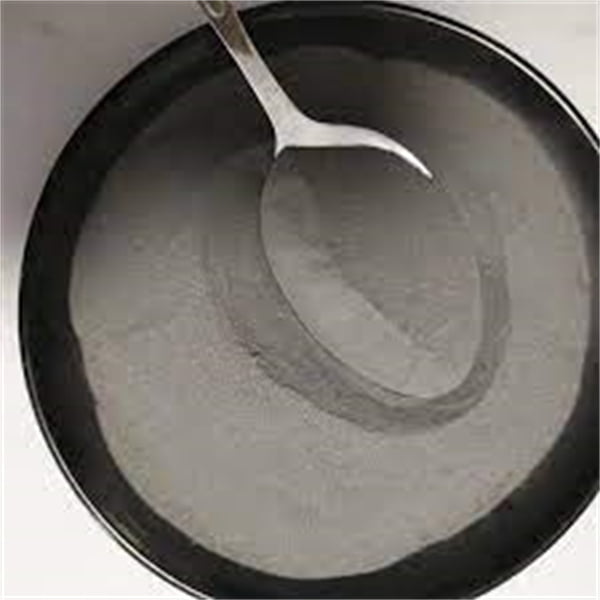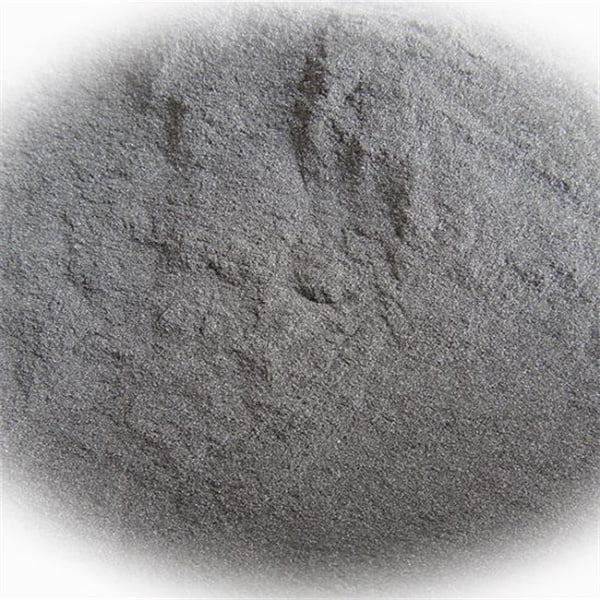EBM Additiv tillverkning
Innehållsförteckning
Översikt över EBM Additive Manufacturing
Elektronstrålesmältning (EBM) är en typ av pulverbäddsfusionstillverkning som använder en elektronstråle för att selektivt smälta och smälta samman metalliska pulverpartiklar lager för lager för att bygga upp komplexa 3D-delar.
Viktiga egenskaper hos EBM-processen inkluderar:
- Bygger helt täta delar från metallpulverråvara
- Använder en elektronstråle som energikälla
- Fungerar under vakuum och hög temperatur
- Uppnår utmärkta mekaniska egenskaper
- Idealisk för reaktiva metaller som titan och tantal
- Möjliggör komplexa geometrier som inte är möjliga med bearbetning
- Efterbehandling kan krävas för att uppnå den slutliga delens finish
EBM ger fördelarna med designfrihet, delkonsolidering, minskad vikt och prestandaförbättringar inom flyg-, medicin-, dental-, fordons- och industriapplikationer.
Hur EBM Additiv tillverkning Verk
EBM additiv tillverkningsprocessen fungerar enligt följande:
- En 3D CAD-modell är skivad i tunna tvärsnittsskikt.
- Metallpulver är jämnt fördelat över en byggplatta i vakuumkammaren.
- En elektronstråle skannar selektivt och smälter pulvret baserat på skivdata.
- Byggplattan faller ner och ytterligare ett lager pulver sprids över den.
- Upprepa steg 3-4 tills delen är klar.
- Överskottspulver avlägsnas och delen värmebehandlas.
- Efterbearbetning som bearbetning eller borrning kan göras vid behov.
EBM-maskinen styr elektronstrålen exakt med hjälp av elektromagnetiska linser och avböjningsspolar. Processen sker under högvakuum vilket möjliggör mycket höga smälttemperaturer.
Typer av EBM Additive Manufacturing Systems
Det finns två huvudtyper av EBM-maskiner:
| Maskintyp | Beskrivning | Byggstorlek | Material | Tillämpningar |
|---|---|---|---|---|
| Små system | Lägre kostnad, lämplig för små delar | 150 x 150 x 150 mm | Titan, koboltkrom, rostfritt, verktygsstål | Tandvård, medicin, forskning |
| Stora system | För applikationer med hög volymproduktion | 500 x 400 x 400 mm | Titan, inconel, tantal | Flyg, bil, industri |
Arcam EBM och GE Additive är de stora EBM-systemtillverkarna som erbjuder både små och storskaliga maskiner.

Material för EBM Additive Manufacturing
En rad metaller kan bearbetas med EBM-teknik:
- Titanlegeringar: Ti6Al4V, Ti6Al4V ELI, TiAl
- Nickellegeringar: Inconel 718, Inconel 625
- Kobolt-krom-legeringar: CoCrMo
- Stål: Rostfria stål, verktygsstål, maråldrat stål
- Eldfasta metaller: Tantal, volfram
- Ädelmetaller: Silver, guld, platina
- Aluminiumlegeringar: AlSi10Mg
Titan är speciellt lämplig för EBM på grund av dess reaktivitet. Men processen kan också bygga höghållfasta och korrosionsbeständiga delar från andra avancerade legeringar.
Tillämpningar av EBM Additive Manufacturing
Viktiga applikationer inkluderar:
Flyg- och rymdindustrin: Turbinblad, motorkomponenter, flygplan och konstruktionsdelar
Medicinska implantat: Ortopediska implantat, fixeringsanordningar, kirurgiska instrument
Fordon: Turboladdarhjul, ventilhus, bränslesystemdelar
Industriell: Värmeväxlare, tryckkärl, pumphus, jiggar och fixturer
Olja och gas: Borrhålsverktyg, ventilhus, grenrör
Försvar: Satellit- och UAV-komponenter, pansarplätering
EBM möjliggör lättare, starkare och högre prestanda komponenter med optimerad design inom dessa branscher.
Fördelar med EBM Additiv tillverkning
Fördelarna med EBM-teknik inkluderar:
- Låg porositet – När man närmar sig 100%-densiteten får man utmärkta mekaniska egenskaper
- Hög hållfasthet – Titanlegeringar matchar och till och med överträffar egenskaperna hos smidesmaterial
- Designfrihet – Komplexa geometrier kan tillverkas
- Snabb prototyptillverkning – Påskyndar produktutvecklingscyklerna
- Konsolidering av delar – Minskar sammansättningar genom att integrera flera komponenter
- Viktminskning – Lättare komponenter möjliggör bränslebesparingar inom fordon och flyg
- Produktion just-in-time – Minskar långa ledtider för gjutgods och smide
- Skräddarsydda produkter – Patientspecifik medicinteknisk utrustning och personliga konsumentvaror
- Hållbar produktion – Minskar avfall jämfört med subtraktiva metoder
Dessa fördelar driver införandet av EBM i olika branscher för att förbättra prestanda, minska kostnaderna och möjliggöra nya produktinnovationer.
Begränsningar för EBM Additive Manufacturing
EBM har vissa begränsningar:
- Hög kostnad för utrustning – EBM-maskiner har höga initiala kapitalkostnader i intervallet $500 000-$1,5 miljoner
- Delstorleksbegränsningar – Byggkuvert begränsar maximala deldimensioner
- Dimensionell noggrannhet – Efterbehandling krävs ofta för att uppnå snäva toleranser
- Ytfinish – Trappstegseffekt leder till grova ytor som kräver efterbehandling
- Bygghastighet – Långsammare än pulverbäddsfusionsprocesser med laser- eller elektronstrålar
- Reaktiva metaller – Begränsad till inerta metaller eller metaller som titan och tantal
- Avlägsnande av pulver – Oanvänt metallpulver måste avlägsnas och återvinnas
- Termiska påfrestningar – Kan orsaka del skevhet och sprickbildning
Fortsatt utveckling inom EBM-teknik syftar till att förbättra hastighet, kvalitet, materialflexibilitet och kostnadseffektivitet.
Designprinciper för EBM Additive Manufacturing
Följande designriktlinjer är avgörande för att framgångsrikt använda EBM-teknik:
- Minimera överhäng och ostödda geometrier
- Inkludera små hål (1-2 mm) för borttagning av överflödigt pulver
- Använd gallerstrukturer för att minska vikten
- Håll väggtjockleken över 1 mm
- Inkludera vinklar ≥ 30° för att undvika stresskoncentrationer
- Ta hänsyn till 0,2% linjär skalningsfaktor
- Tillåt 0,2 mm tolerans på fina detaljer
- Designa invändiga kanaler ≥ 2 mm för pulveravstånd
- Minimera områden med fångad pulveransamling
- Placera delen på plattan för att minimera tvärsnittsarean
Simuleringsverktyg hjälper till att bedöma designprestanda tidigt i designprocessen. Design kan optimeras specifikt för AM-kapacitet.
Processparametrar för EBM
Kritiska EBM-processparametrar inkluderar:
- Strålkraft – Påverkar bygghastighet, porositet, mikrostruktur
- Strålhastighet – Högre hastigheter ökar bygghastigheten men kan äventyra densiteten
- Strålfokus – Fusion av fokusering och avböjningskontroll
- Skanna strategi – Omväxlande rasterriktning mellan skikten minskar kvarvarande spänningar
- Skiktets tjocklek – Finare lager förbättrar upplösningen men minskar bygghastigheten
- Bygg temperatur – Högre temperaturer minskar kvarvarande spänningar men äventyrar precisionen
- Smältpoolens storlek – Påverkar lokal mikrostruktur och egenskaper
- Råmaterial – Pulverstorleksfördelning och morfologi påverkar densitet och ytfinish
Genom att kontrollera dessa parametrar kan egenskaper och kvalitet ställas in för specifika applikationer.
Efterbearbetning för EBM-delar
Vanliga EBM-delefterbehandlingssteg inkluderar:
- Avlägsnande av pulver – Pärlblästring för att ta bort överflödigt pulver från inre håligheter
- Stresslindrande – Varm isostatisk pressning kan hjälpa till att minska kvarvarande spänningar
- Cut-off – Tråd EDM för att ta bort delar från byggplattan
- Maskinbearbetning – CNC-fräsning, svarvning, borrning för att uppnå dimensionsnoggrannhet och ytfinish
- Polering – För glansig ytfinish på visuella delar som smycken och medicinska implantat
- Ytbeläggningar – Applicera slitstarka, lågfriktions- eller estetiska beläggningar
- Kvalitetstestning – Mät mekaniska egenskaper, inre defekter, mikrostruktur
Att minimera efterbearbetningen minskar den totala delkostnaden. Men kritiska applikationer kan kräva omfattande efterbehandling för att uppfylla specifikationerna.
Kvalitetskontroll för EBM
Rigorösa kvalitetskontrollprocedurer för EBM-produktion innefattar:
- Råvaruinspektion – Siktanalys, flödestestning och mikroskopering av råmaterialpulver
- Övervakning under process – Smältbassängens storlek, pulverbäddstemperatur, vakuumnivå
- Dimensionskontroller – CMM och annan metrologisk kontroll av kritiska dimensioner
- Mekanisk provning – Draghållning, kompression, mikrohårdhet, brottseghet, utmattning
- Icke-förstörande utvärdering – röntgendatortomografi för att kontrollera interna defekter
- Metallografi – Mikrostrukturell karakterisering med optisk mikroskopi och elektronmikroskopi
- Densitetsanalys – Archimedes metod eller heliumpyknometri för att verifiera ≥ 99.5% densitet
- Ytråhetsmätning – Optisk profilometri för att kvantifiera ytstruktur
- Kemisk analys – ICP och masspektroskopi för att verifiera sammansättningen
- Validering builds – Test builds för att verifiera processparametrar för nya delar
Denna omfattande testning verifierar EBM-produktkvalitet för strikta industriella tillämpningar.
Kostnadsmodellering för EBM Additiv tillverkning
Totala kostnader beror på:
- Maskinkostnad – Höga investeringar i kapitalutrustning
- Materialkostnad – Pulverråvara kostnad/kg
- Driftskostnad – Arbetskraft, energi, underhåll, inert gas
- Efterbearbetning – Ytterligare bearbetning och finbearbetning
- Bygg fart – Snabbare konstruktioner minskar kostnaderna
- Utnyttjandegrad – Högre maskinanvändning fördelar kostnaderna på fler delar
- Köp-till-flyg-förhållande – Oanvänt pulver måste återvinnas med extra kostnader
- Delens geometri – Kompakta delar maximerar användningen av byggvolymen
- Bygg volym – Större maskiner möjliggör högre genomströmning
- Stordriftsfördelar – Högvolymproduktion minskar kostnaderna per del
Kostnaderna minskar avsevärt när produktionsvolymerna ökar och överskottspulver kan återanvändas.
Välja en EBM Additive Manufacturing-leverantör
Kriterier för att välja en EBM-tjänsteleverantör:
- Beprövade systeminstallationer och kundreferenser
- Olika certifierad erfarenhet av flyg-, medicin- och industriapplikationer
- Utbud av kvalificerade material som titan, inconel, koboltkrom
- Certifiering av kvalitetsledningssystem – ISO 9001, AS9100
- Stränga testprocedurer för kvalitetskontroll
- Inventering av standard- och specialpulver
- Sekundära interna bearbetnings- och efterbehandlingsmöjligheter
- Designstöd och bygg simuleringstjänster
- Professionella ingenjörer i personal med metallurgiexpertis
- Stora byggkuvert för hög genomströmning
- Konkurrenskraftig prisstruktur kommuniceras transparent
- Kan hantera ITAR och andra reglerade projekt
- Beläget i närheten vilket möjliggör personliga möten och samarbete
Etablerade tjänsteleverantörer med meriter inom reglerade branscher tenderar att bäst uppfylla rigorösa kvalitetsförväntningar.
För- och nackdelar med EBM vs andra AM-metoder
Fördelar med EBM:
- Heltäta metalldelar som konkurrerar med smidda egenskaper
- Bra ytfinish på uppåtvända ytor
- Hög bygghastighet i förhållande till laserprocesser
- Låga kvarvarande spänningar jämfört med laserpulverbäddfusion
- Utmärkta mekaniska egenskaper hos färdiga komponenter
- Smältpoolskontroll möjliggör förfining av mikrostrukturen
- Inerta byggförhållanden idealiska för reaktiva metaller som titan
- Kostnadseffektivt för medelstora till höga produktionsvolymer
Nackdelar med EBM:
- Högre utrustningskostnad än polymersystem
- Begränsade materialalternativ jämfört med laser PBF
- Kontrollerad process som kräver utbildade operatörer
- Betydande efterbearbetning krävs ofta
- Förbrukar stora mängder el
- Maximal delstorlek begränsad av byggkuvert
- Hantering och återvinning av reaktiva metallpulver
- Lägre profilnoggrannhet än bearbetade eller smidda delar
För produktion av metallkomponenter i medelstor till hög volym utmärker EBM sig på att leverera hög styrka och kvalitet till rimliga kostnader. Men det krävs erfarenhet för att bemästra processen.

Jämförelse av EBM vs DMLS och SLM
EBM vs DMLS:
| Parameter | EBM | DMLS |
|---|---|---|
| Strålkälla | Elektronstråle | Fiberlaser |
| Atomsfären | Vakuum | Inert gas |
| Typiska material | Titanlegeringar, tantal, inconel | Rostfritt stål, koboltkrom, aluminium |
| Bygghastighet | Hög | Medium |
| Ytfinish | Måttlig | Mycket hög |
| Kostnad per del | Måttlig | Hög |
| Max delstorlek | Stor | Medium |
EBM vs SLM:
| Parameter | EBM | SLM |
|---|---|---|
| Strålkälla | Elektronstråle | Fiberlaser |
| Atmosfär | Vakuum | Inert gas |
| Typiska material | Titan, tantal, inconel | Aluminiumlegeringar, stål, nickellegeringar |
| Restspänning | Låg | Hög |
| Mekaniska egenskaper | Utmärkt | Mycket bra |
| Kostnad per del | Måttlig | Låg |
| Noggrannhet | Måttlig | Hög |

VANLIGA FRÅGOR
Vilka material kan bearbetas med EBM-teknik?
De vanligaste EBM-materialen är titanlegeringar, nickellegeringar som Inconel, koboltkrom och vissa verktygsstål. På senare tid har eldfasta metaller och aluminiumlegeringar också antagits.
Vilken skikttjocklek kan uppnås med EBM-system?
EBM-maskiner kan avsätta lager ned till 50 mikron tjocka. Tunnare 25-35 mikron lager är typiska för små intrikata komponenter medan 70-100 mikron används för större grova delar.
Vilka efterbearbetningsmetoder används för EBM-komponenter?
Typisk efterbearbetning inkluderar borttagning av pulver, avspänningsavlastning, avskärning från plåten, bearbetning, ytbehandlingar som slipning eller polering samt inspektion och testning.
Vilken precision och ytfinish kan uppnås med EBM-delar?
Dimensionell noggrannhet runt ±0,2% (±0,5 mm per 25 cm) kan uppnås men toleranserna kan förbättras ytterligare genom efterbearbetning. Ytråheten som byggts varierar från 10-50 μm Ra.
Hur jämför EBM med DMLS för flygtillämpningar?
EBM kan matcha materialegenskaperna hos traditionellt smidda titankomponenter för strukturella applikationer. Det ger högre bygghastigheter än DMLS men kräver vanligtvis mer omfattande efterbearbetning.
Dela på
MET3DP Technology Co, LTD är en ledande leverantör av lösningar för additiv tillverkning med huvudkontor i Qingdao, Kina. Vårt företag är specialiserat på 3D-utskriftsutrustning och högpresterande metallpulver för industriella tillämpningar.
Förfrågan för att få bästa pris och anpassad lösning för ditt företag!
Relaterade artiklar

Högpresterande segment för munstycksvingar: Revolutionerande turbineffektivitet med 3D-utskrift i metall
Läs mer "Om Met3DP
Senaste uppdateringen
Vår produkt
KONTAKTA OSS
Har du några frågor? Skicka oss meddelande nu! Vi kommer att betjäna din begäran med ett helt team efter att ha fått ditt meddelande.

Metallpulver för 3D-printing och additiv tillverkning
FÖRETAG
PRODUKT
cONTACT INFO
- Qingdao City, Shandong, Kina
- [email protected]
- [email protected]
- +86 19116340731








